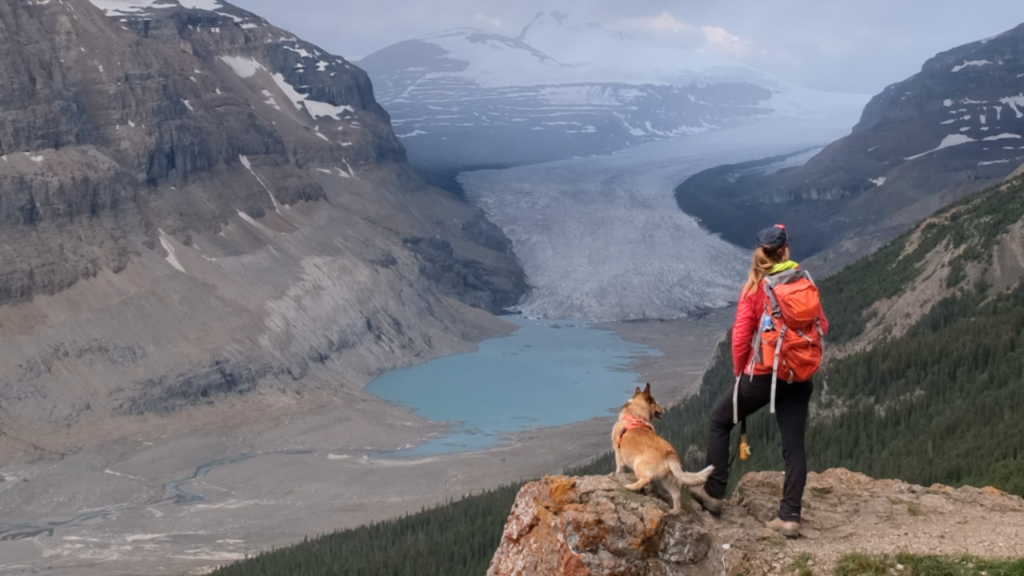
As an avid hiker and a dog trainer, one of my favourite things to do is go hiking with my dog Neirah. In the last decade, we’ve gone on hundreds of hikes together, including some overnight trips and many intense full-day hikes up steep mountains.
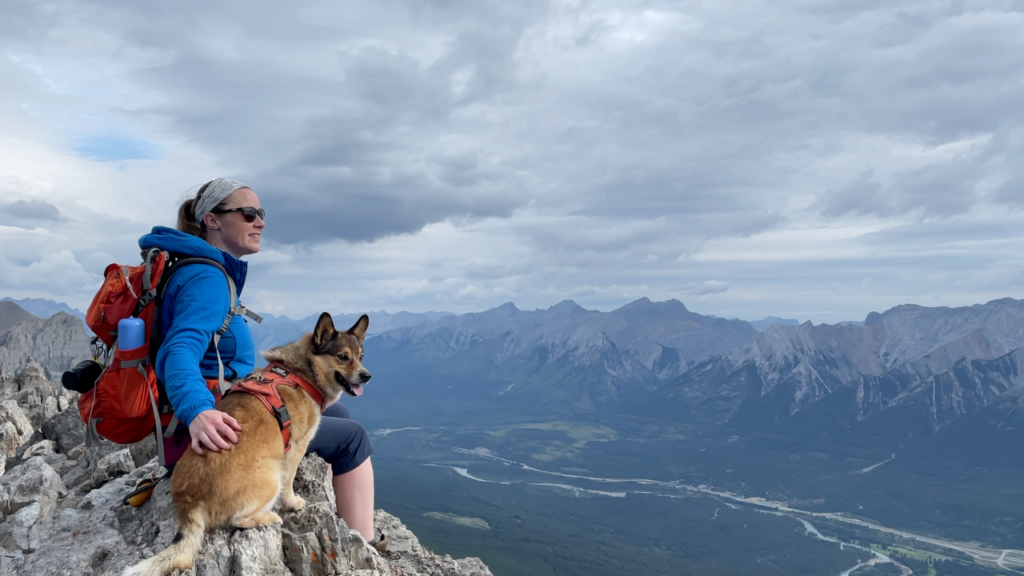
Hiking with your dog is fantastic exercise, it’s a great bonding experience, and it’s really fun. However, taking your dog for a hike is much different than going on a simple neighbourhood walk. If you want hiking with your dog to be both fun and safe, it requires a bit more thought and planning.
I want to share 12 of my best tips for hiking with your dog!
(Prefer video content? Join me on a few hikes as I share these tips in a hiking vlog here:
Tip #1 Stay Flexible About Your Plans
As the saying goes, you can make your best plans, but sometimes the world will just laugh.
I’ve had to change hiking plans due to heavy rain and extreme heat, I’ve had to run off of summits because of thunder and lightning, and I’ve had to cancel numerous hikes due to trail closures for things such as grizzly bears or ice risk.
So yes, it’s smart to make a plan for what hike you want to do and to make sure that you know the route, but it’s important to stay mentally flexible when plans do need to change.
Tip #2: Be Radically Honest About You and Your Dog’s Current Fitness Level, and Choose the Hike Based on Whoever Is in Worse Condition
Typically when going to the mountains we plan some intense hikes with a lot of elevation gain, and my dog has no issue joining me.
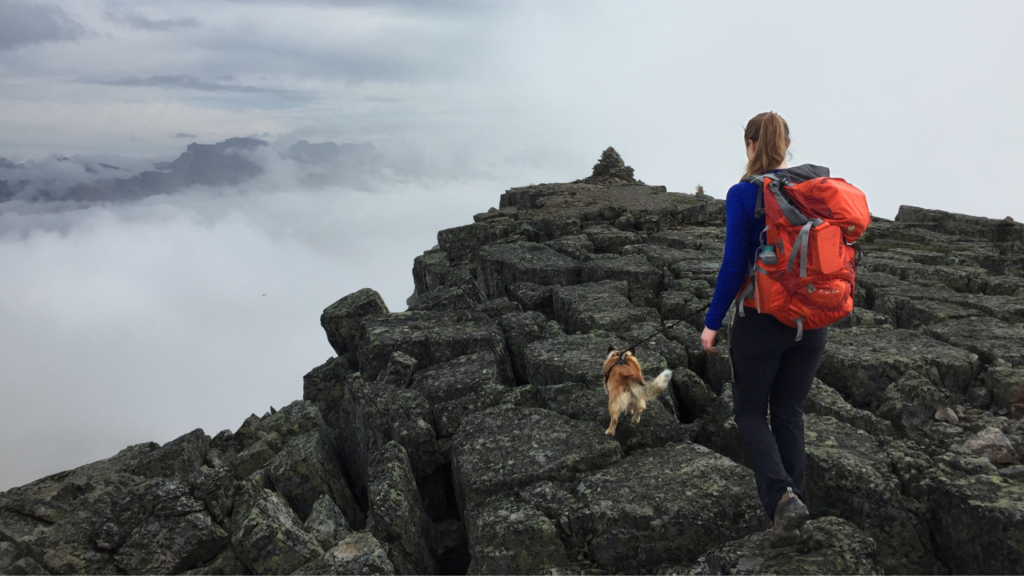
On our trip this spring, things were very different.
Neirah had TPLO surgery in the winter, so she’s still rebuilding her physical conditioning, I had a shoulder injury, and we also had my 9 month old baby along with us!
If we had tried to do hikes that matched our previous difficulties, somebody would have gotten even more injured. So rather than staying home and doing nothing, we’re just got out and went on easier hikes that we could all still safely enjoy!
If you’re typically used to a 30-minute neighbourhood walk with your dog, I would not suggest starting with a really lengthy or steep hike. Start simple! It’s still getting out in nature and having a great time with your dog.
If you set reasonable hiking goals based on both of your fitness levels, you’re going to have a much more enjoyable time with a lot less risk.
I personally use the free AllTrails app to check out details about a hike, including distance and elevation gain. You can sort hikes by difficulty, so it’s a great app for matching your current abilities to the hiking options in your area.
Tip #3: Pick Up Your Dog’s Poop
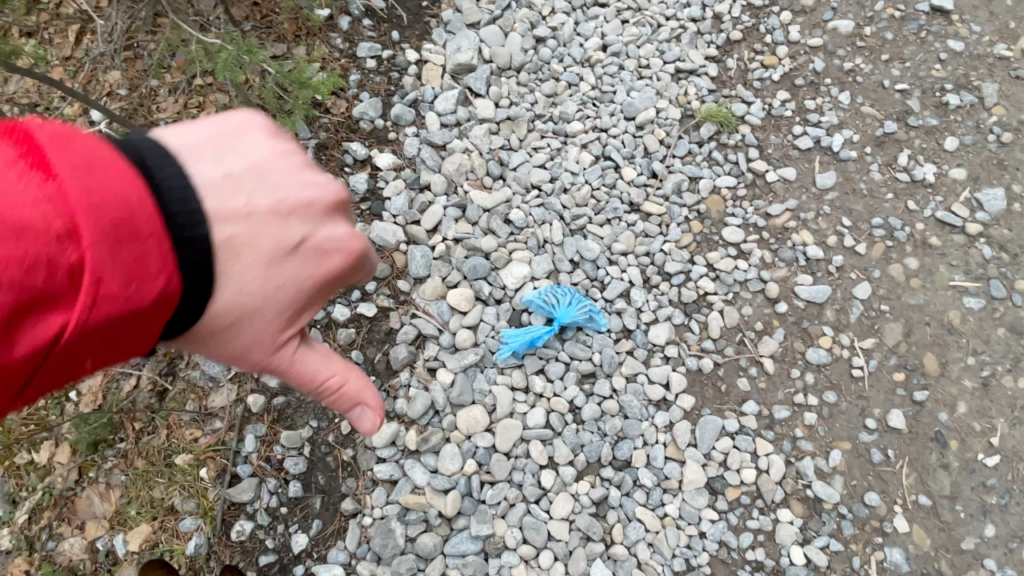
Don’t be that person!
On our hike we found 3 bags of discarded dog poop on the trail that people hadn’t bothered to pack out with them. If you bring your dog hiking, it’s a requirement that you clean up after your pet.
Dog waste is not a natural part of the ecosystem. It can damage plant life, it can cause water pollution, and it can transmit disease. It’s also just really gross and disrespectful to other hikers that are trying to enjoy the trail.
I understand all too well that garbage cans are often few and far between on hikes, and that it’s not enjoyable to carry a bag of dog poop with you all day. I also personally do not want to put it in my backpack where my extra clothes or snacks are. An easy solution is to bring a poop caddy that clips to the outside of your backpack.
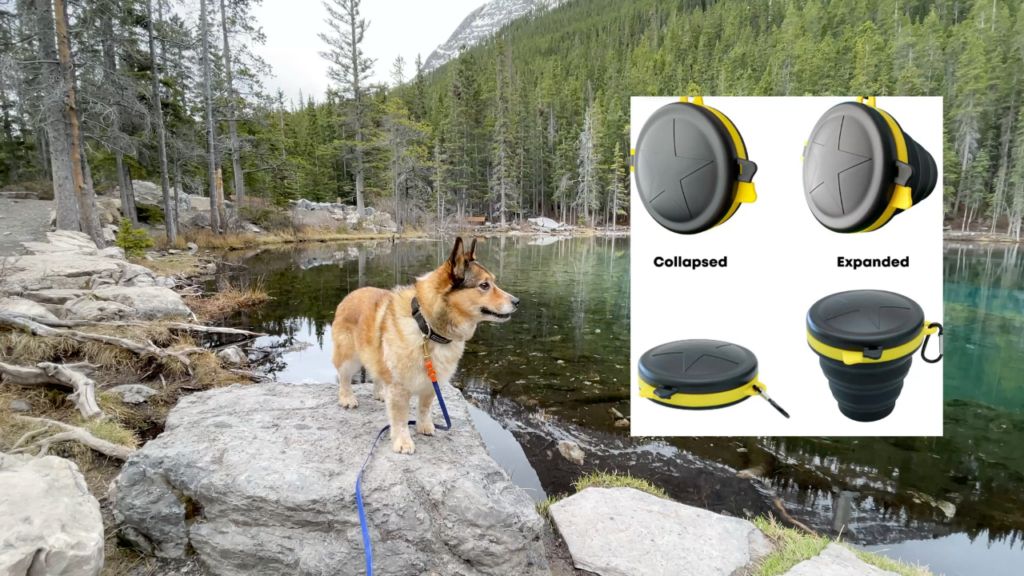
Once it’s closed, it blocks the smell. I’ve linked all of the gear that I personally use on my favourites page linked here.
Tip # 4: Make Sure That You Bring Any Important Safety Gear and That You Know How to Use It
When you’re hiking with your dog you’re likely going to be far from your vehicle and possibly from access to help, so it’s important to be self-sufficient when you’re out on the trail.
One of the things that I bring on every hike is a doggy carrier in case my dog gets injured, and I need to carry her out—which has happened once.
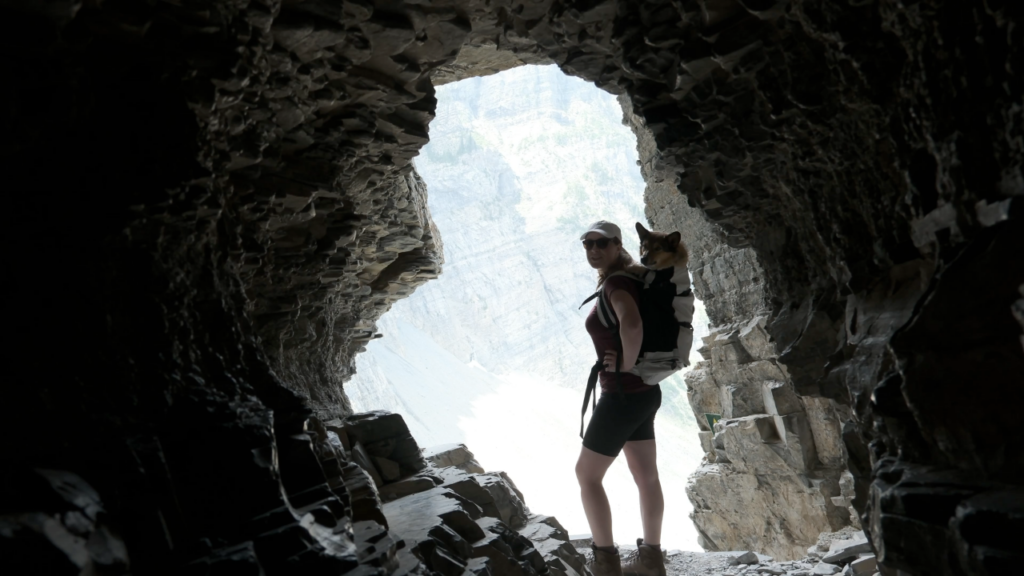
I’ve also used this carrier on numerous occasions to prevent injuries by carrying her up risky hike sections such as ladders.
Again, I’ve linked everything that I personally use on my favourites page linked here.
Another concern in the areas that I hike is bears – especially grizzly bears. So, I make sure that I always have bear spray with me, and that it’s clipped to the outside of my bag so that it’s easy to access in an emergency.
I would suggest doing a quick Google search about hazards in your area—things like ticks, weather, anything else that you might need to be prepared for.
Tip #5: Please Respect Park Rules
Often there are signs posted at trailheads or on park websites outlining rules for pets on specific hikes.
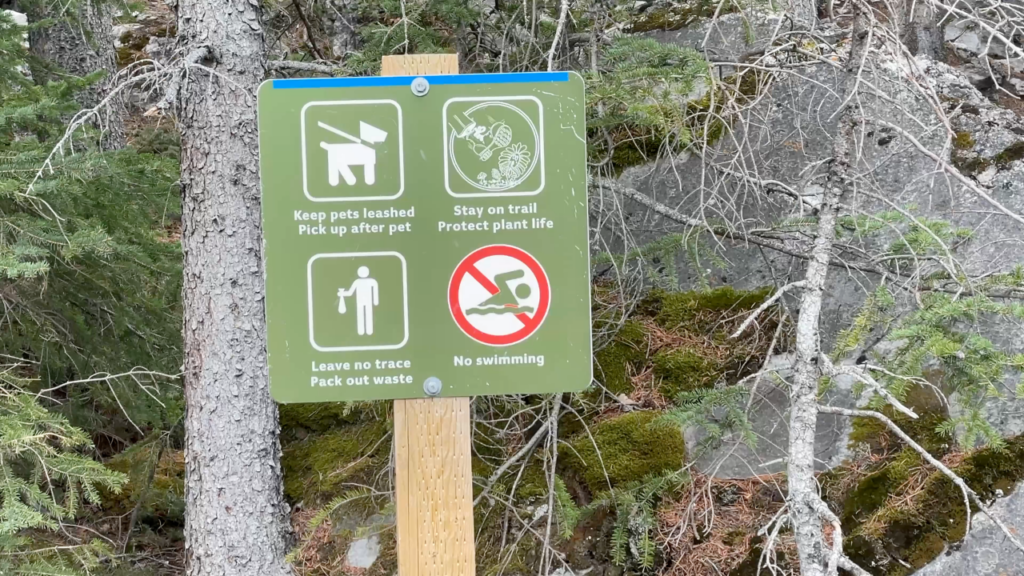
If you’re asked to keep your dog on leash, please do so for the safety and enjoyment of your dog, other hikers, and wildlife.
We’re lucky to have maintained hiking trails to enjoy with our dog at all, so please don’t be the person that contributes to dogs getting banned completely by disrespecting a few simple rules. And similarly,
Tip #6: Respect Wildlife
These areas that you’re hiking in are the animals’ homes, and you’re just a visitor. If you are in an area that does allow dogs to be off leash, still make sure that you honestly ask yourself if your dog is trained well enough to roam free.
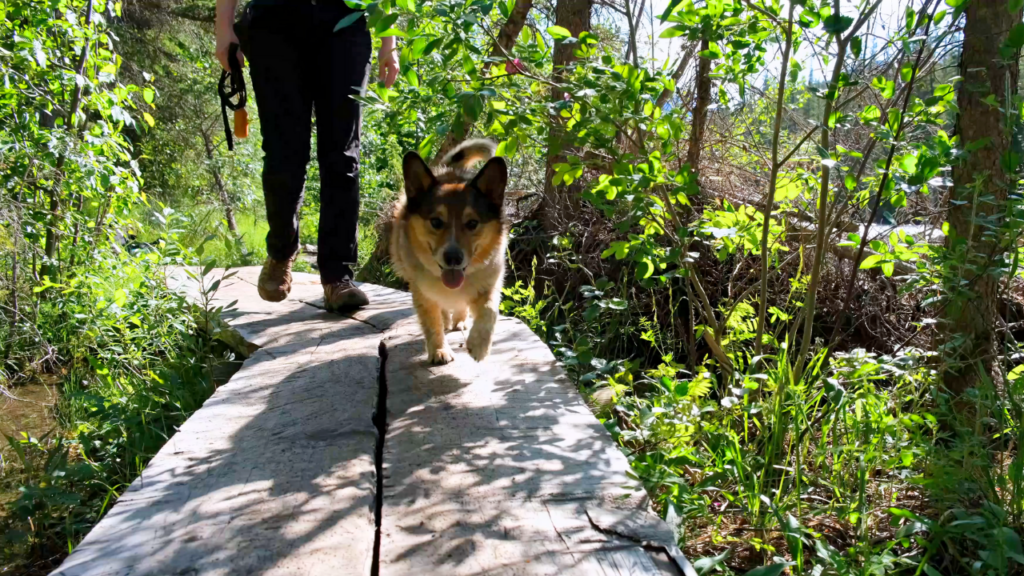
Any animal chasing can be really dangerous for the wildlife, for you, and for your dog. When Neirah was younger, she was an absolute menace with animals. She would chase anything. Given the chance I 100% know that she would have chased a rodent off a cliff.
I knew that I wanted to hike a lot with Neirah, and I also knew that I wanted to be able to let her off leash where it was allowed, so animal chasing was a behaviour that I put a lot of effort into training. I wanted Neirah to be able to watch animals without chasing them.
I created a tutorial video showing the rewards-based method I used to stop Neirah’s animal chasing. You can watch that here:
If you want a full step-by-step training program to stop unwanted animal chasing, click here:
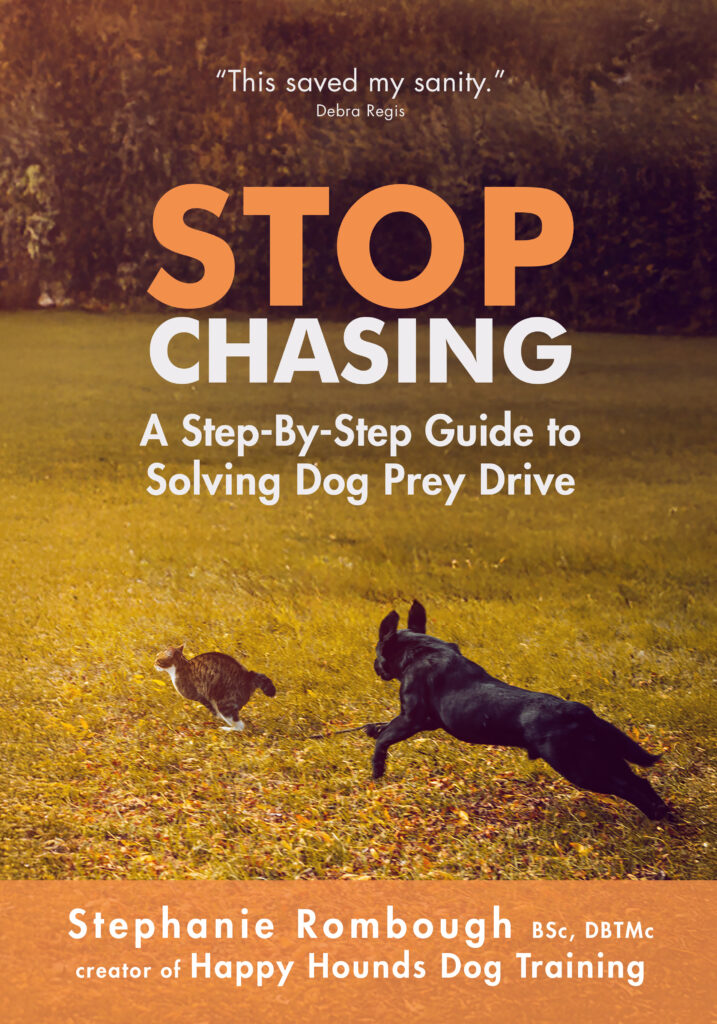
Tip #7: If You Get a Snack, They Get a Snack
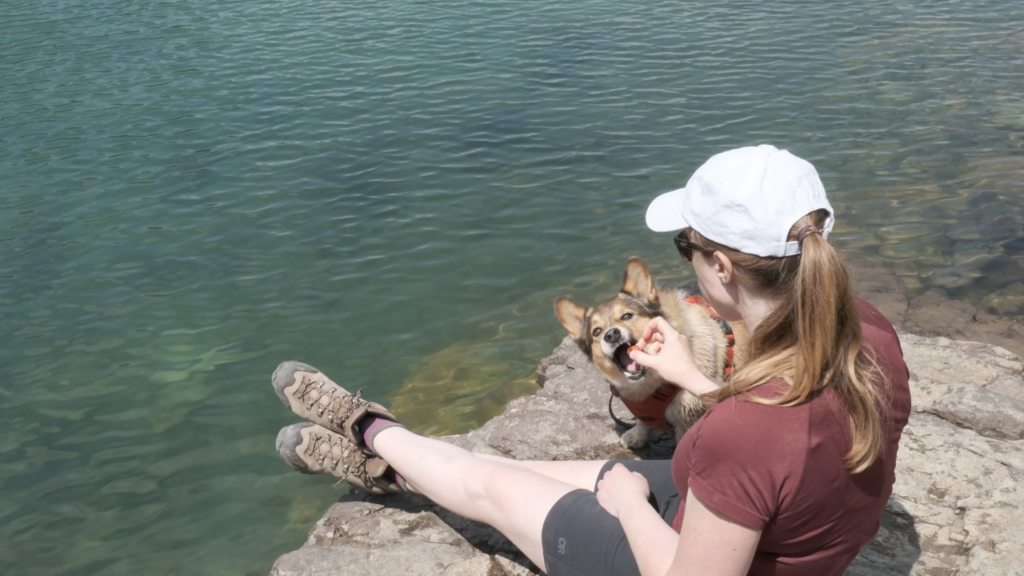
Them’s the rules!
Tip #8 Try to Address Any Training Issues Before You Head Out Hiking
Due to the extra stimulation on hikes and the extended amount of time that you’ll be walking, any training deficits that bother you on regular walks will likely be much worse on hikes.
At an absolute minimum, I suggest training these three skills in particular:
First, the “leave it” cue, which means don’t go after that thing that you’re interested in. I use this cue for gross sidewalk snacks, animals that Neirah might want to chase, and much more. I have a youtube tutorial linked here showing you how to train a solid “leave it!”.
Second, make sure that your dog knows “drop it,” which means release that thing from your mouth. I’ll link a tutorial for training “drop it” here:
You never know what your dog is going to find on a hike, so these two cues are really important for safety. It’s also important to recognize that they are separate cues and should not be used interchangeably!
I also strongly encourage you to teach your dog foundational leash skills, because the fastest way to ruin a hike is to have your arm dragged off the whole time. I’ve linked my free leash training guide here if you want to check that out.
Tip #9 Don’t Make Your Dog Heel
As a dog trainer, I’m typically an advocate for training heel because I think it’s an important skill for busy sidewalks, for times you need to get somewhere quickly, and for building a solid reinforcement history.
However, hiking isn’t the time or place to make your dog heel. Instead, I encourage loose leash walking, which means go anywhere on the leash as long as there isn’t leash tension.
Our main sense as humans is sight, but dogs’ is smell. Imagine having somebody cover your eyes when you’re trying to enjoy a nice view – you would be very frustrated. Since dogs’ main sense is smell, keeping them in a strict heel and not letting them sniff on hikes is basically like somebody covering your eyes. Let your dog sniff and be a dog so that they can enjoy the hike too!
Tip #10 Start Early and Summit by Noon
I’m very strict about this rule, especially on hot days or harder hikes. I learned the “summit by noon” rule from mountaineering – mostly because the snowpack becomes less and less stable as the day progresses, and that heavily increases the danger.
However, I also started applying it to hiking with my dog. The rule is simple: I always try to summit or reach the halfway point of a hike by noon at the absolute latest (preferably by 10:00 a.m.) Depending on how long of a hike we’re doing that day, this sometimes means that we need to start very early in the morning.
I’m strict about this because I want to make sure that we’re halfway through the distance, or that we’ve finished most of the incline walking, before the worst heat of the day hits. Dogs are very susceptible to heat stroke, which can be very dangerous or even fatal. Unlike humans, dogs don’t sweat efficiently. They mainly cool themselves through their paw pads or by panting, but that’s not always enough when it’s really hot outside.
Make sure that you know and that you’re watching for the more early and serious signs of heat stroke in dogs.

However, you can avoid a lot of the heat stroke risk by following the summit by noon rule. You can also lower the risk by taking breaks in the shade or by letting your dog go in streams or lakes to cool off.
You can also lower risk by following tip 11 which is:
Tip # 11 Bring Enough Water for the Both of You and a Way to Deliver It
I’ve had people stop and ask me if their dog can have some of my dog’s water on hikes because they didn’t pack any for their dog. It is so, so dangerous to expect your dog to exercise for hours, especially in the hotter months, without access to water.
I personally use and recommend this dog water bottle that has a built-in cup for Neirah to drink from.
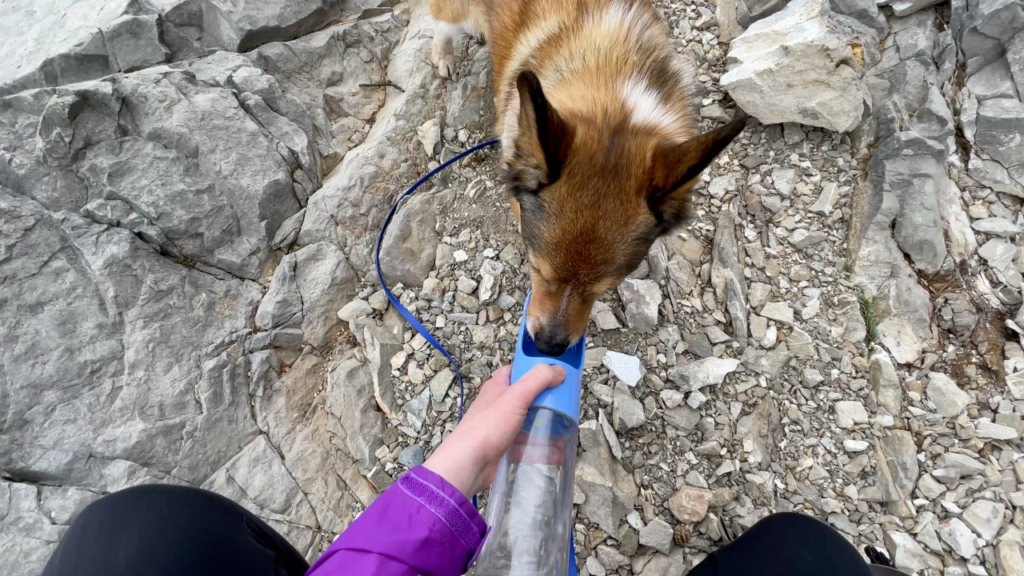
I have dropped it numerous times and it’s never shattered. My favourite feature, though, is that it recollects the water that she doesn’t finish with a press of a button, so that I’m not wasting any—and therefore having to carry more. It’s linked on my favourite items page here.
And lastly,
Tip #12 Is Have fun!
We almost didn’t go on our recent hiking trip because we knew that we couldn’t do our typical strenuous hikes (see tip 2), but I’m so glad that we did.
Neirah absolutely loves all the new and unique smells on hikes (and obviously the snack rule!).
Hiking with your dog is really fun, regardless of how difficult or long the hike is.
Simply pick a hike that interests you and that’s within your current abilities, hike at whatever pace you feel comfortable at, stop to take lots of photos and snack breaks, and feel proud that your dog is getting such an epic experience with you.
These memories truly last forever, and it’s so worth the effort.
Happy hiking!
Disclosure: Happy Hounds uses affiliate links. Purchasing with these links will not cost you any extra, but I get commissions for purchases made through these links. Affiliate links help me to continue to offer free resources & blog posts. I would love if you used them!
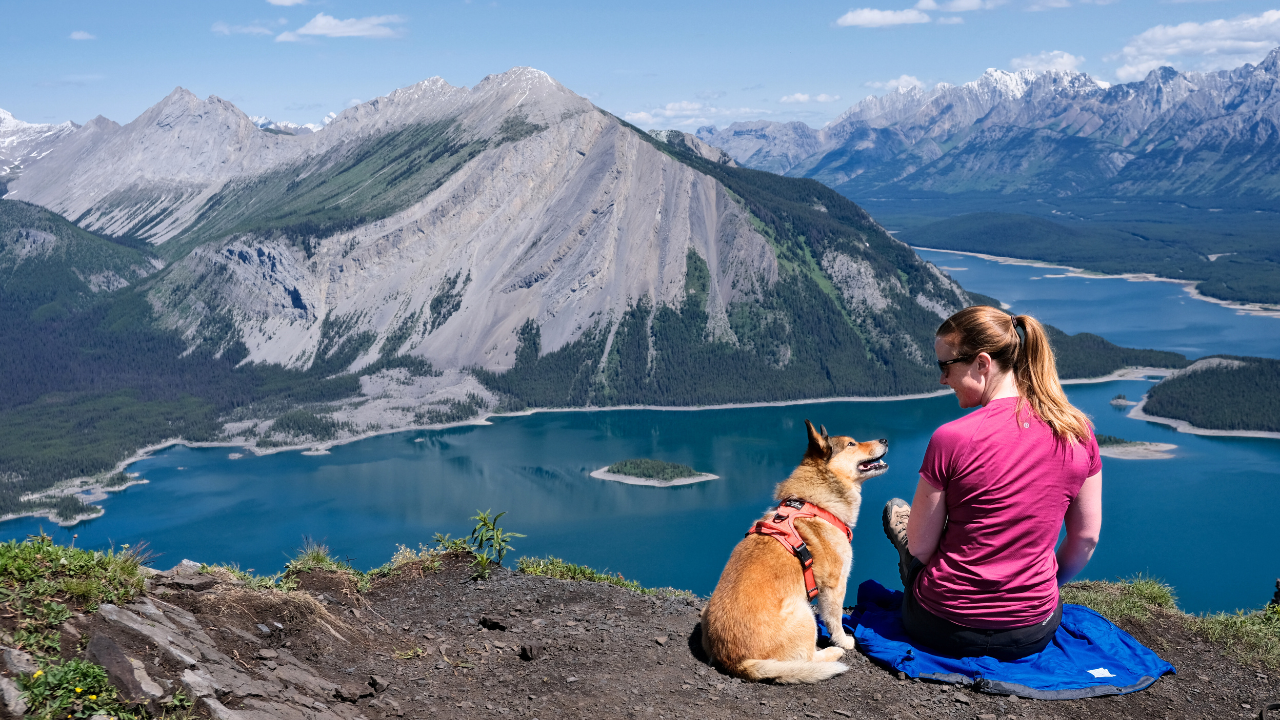
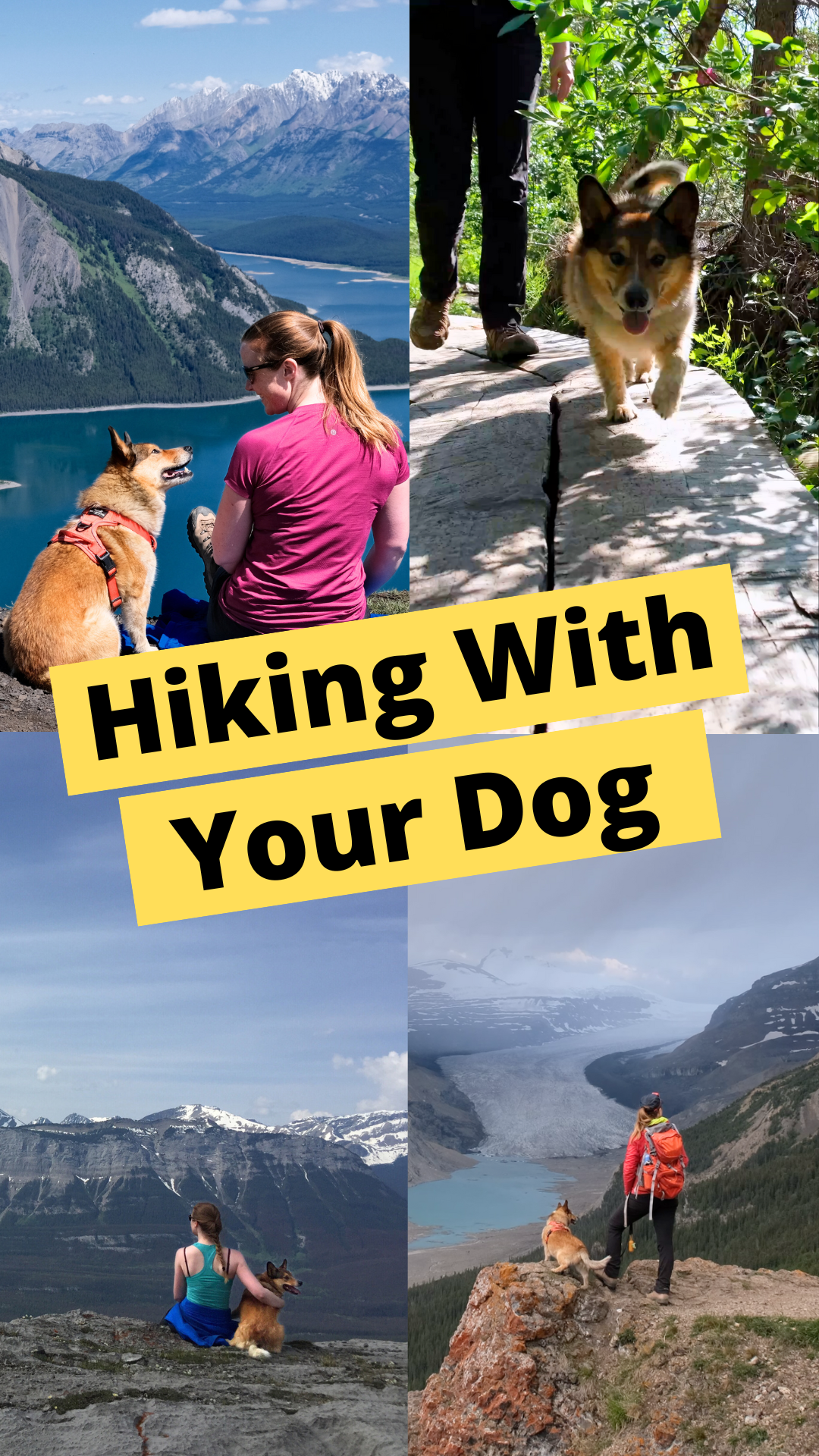
+ show Comments
- Hide Comments
add a comment